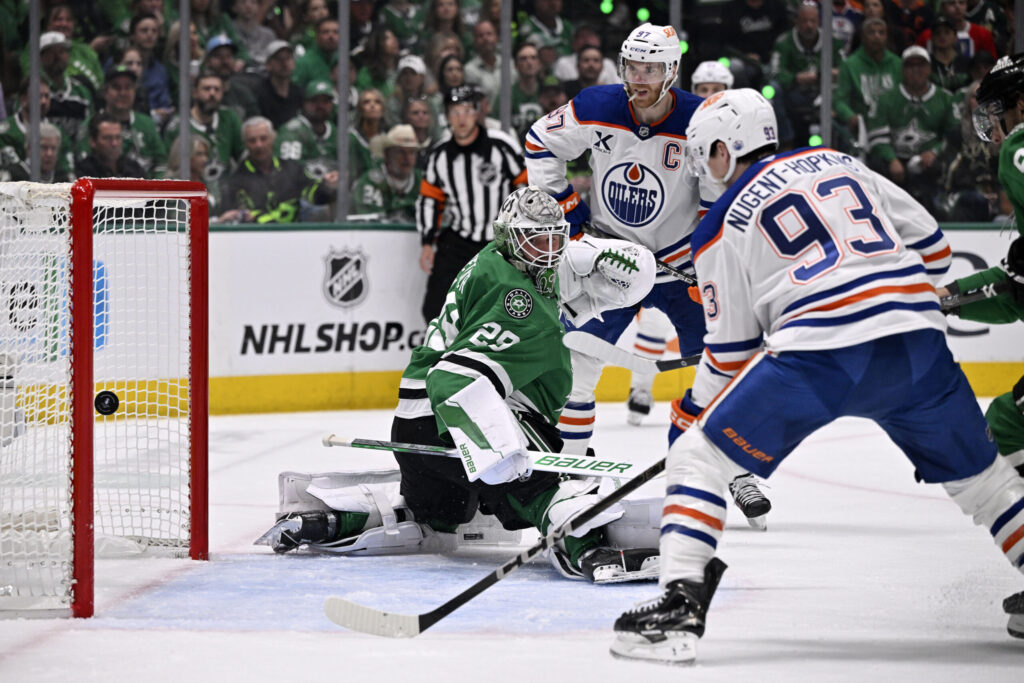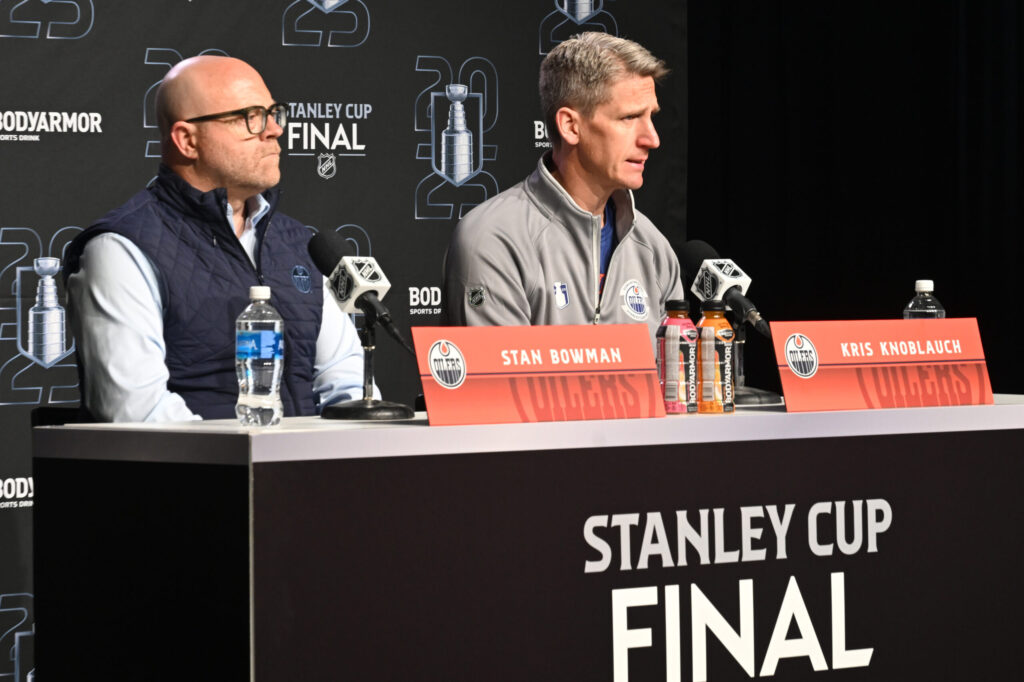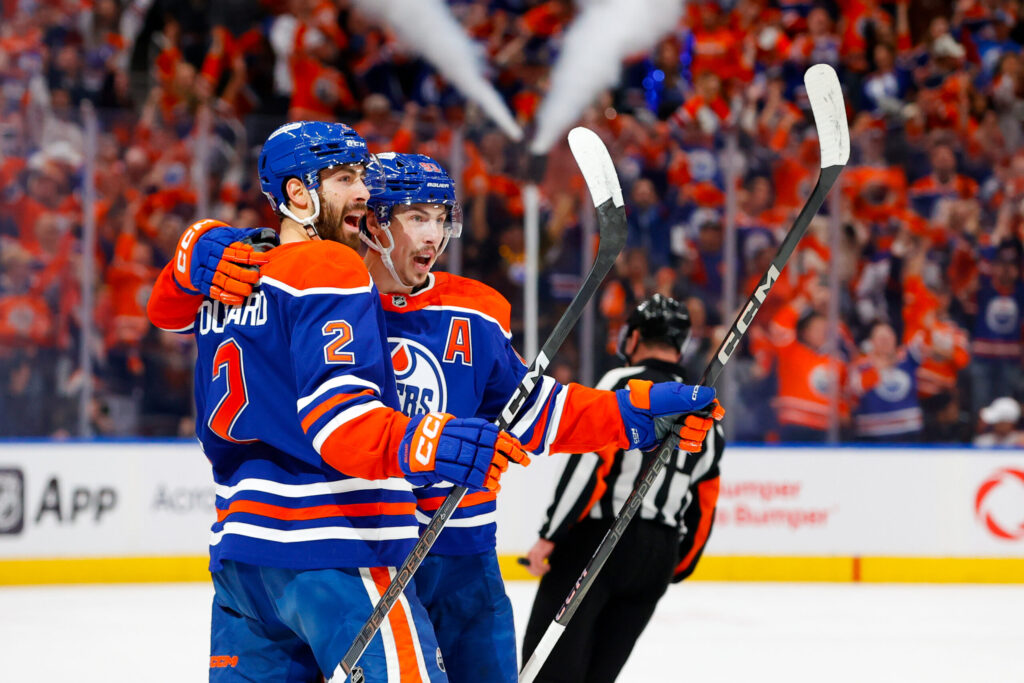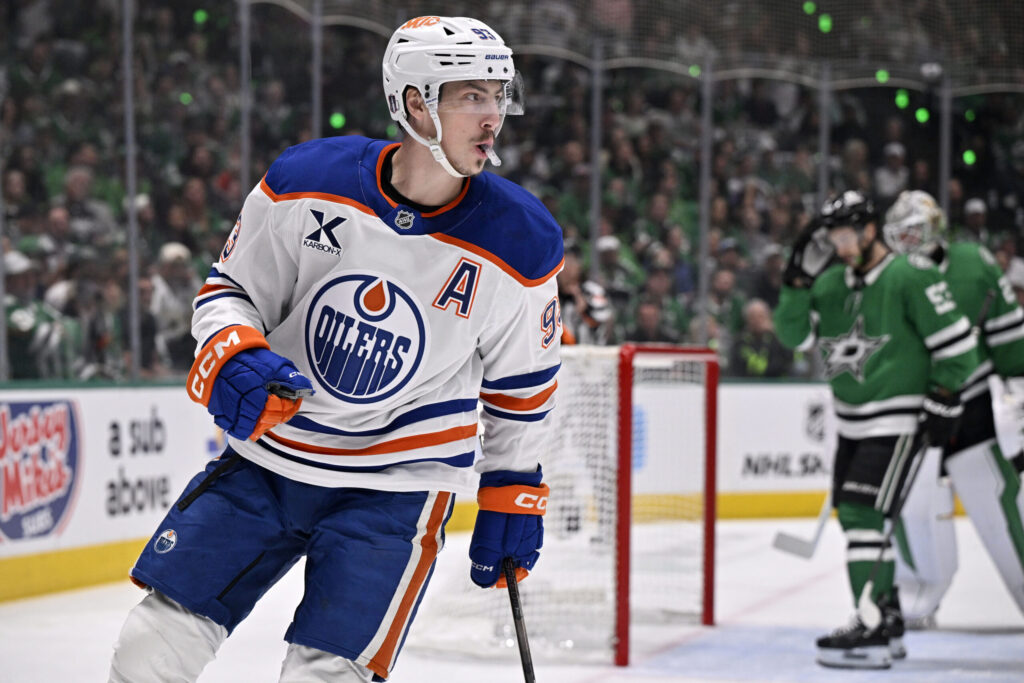For over a decade, Ryan Nugent-Hopkins has been a constant in an Edmonton Oilers organization that has seen anything but. The first overall pick in 2011, “Nuge” has weathered the storm of the “Decade of Darkness,” witnessed the arrival of generational saviors, and evolved his game time and again to fit the team’s needs. He is the longest-serving Oiler, a quiet leader, and perhaps the most versatile forward on the roster. And therein lies the fundamental question that continues to follow him, a debate that echoes in the halls of Rogers Place and across the sports talk radio waves of Northern Alberta: Where does Ryan Nugent-Hopkins provide the most value to a team with Stanley Cup aspirations?
Is he the cerebral, playmaking winger perfectly suited to ride shotgun with Connor McDavid, or is he the key to unlocking the kind of punishing centre-ice depth that separates contenders from champions? The answer isn’t simple, and even the team’s brain trust seems to be of two minds.
Riding Shotgun: The Case for the Wing
You don’t break up a good thing. It’s one of the oldest adages in sports, and for good reason. During the 2024-25 season, one of the Oilers’ most effective offensvie trios was, by the numbers, the line of Ryan Nugent-Hopkins, Connor McDavid, and Zach Hyman. Together, they potted 15 goals at five-on-five, a testament to a chemistry that is hard to manufacture.
In the modern NHL, playing with a talent like McDavid isn’t just about speed; it’s about processing the game at light speed. McDavid bends time and space, and he needs linemates who can anticipate the play, find the soft spots, and finish the chances he inevitably creates. Nugent-Hopkins, with his high hockey IQ, has proven he can be that player. He doesn’t need to be the primary driver of the line; he needs to be the brilliant complementary piece. His vision and passing ability make him a perfect foil for a pure goal-scorer like Hyman and a generational playmaker like McDavid.
This viewpoint is seemingly shared by the man at the top of the hockey operations flowchart, General Manager Stan Bowman. Bowman has publicly identified Nugent-Hopkins as one of the “three of the four wingers to play in the top six.” This is the asset-management perspective. You have two of the world’s best centres in McDavid and Leon Draisaitl. The logical next step is to surround them with the most skilled wingers possible to maximize the offensive output of your top two lines. Why relegate a 100-point player (a feat RNH accomplished in 2022-23, largely from the wing) to a third-line role when he has proven he can produce at an elite level alongside your best player?

Furthermore, his role on the Oilers’ devastating top power-play unit can’t be overstated. Nuge operates as a key distributor and shooter, a role he executes flawlessly. Keeping him in the top-six at even strength maintains the rhythm and chemistry that makes their special teams so lethal. The argument is simple and compelling: play your best players with your best players.
Forging the Trident: The Depth Argument
While the top-line production is tantalizing, playoff hockey is a different beast. The Stanley Cup isn’t won by one line; it’s won with relentless, suffocating depth that wears opponents down over a seven-game series. It’s about rolling three, even four, lines that can control matchups and dictate the pace of the game. This is where the argument for shifting Nugent-Hopkins to third-line centre becomes not just a compelling idea, but a strategic necessity.
Imagine the nightmare for an opposing coach. The McDavid line jumps over the boards. You survive. Then the Draisaitl line comes at you. You survive that, barely. And just as your top defensive pairing is gasping for air on the bench, the Oilers send out a third line centered by a defensively responsible, 10-year veteran with a 100-point season. That’s not a third line; that’s a tactical weapon.
This philosophy is championed by the man drawing up the X’s and O’s, Head Coach Kris Knoblauch. Knoblauch is on record stating he believes Nugent-Hopkins is “best suited at centre” and can be “more effective at centre than on the wing.” For a coach, the game is about matchups. Creating what Oilers analyst Jason Gregor calls “incredible centre depth with McDavid, Draisaitl, and Nugent-Hopkins up the middle” transforms the Oilers from a top-heavy offensive machine into a balanced, formidable, three-headed monster.

Gregor predicts that Nuge will eventually find himself as the 3C by the end of the year. He frames it as a potential “demotion” to the bottom-six, but one that ultimately makes the team “that much deeper and better.” It’s a re-definition of roles. It’s not about demoting a player; it’s about deploying a strategic asset to the position where he most significantly impacts the team’s overall chance of winning. A projected third line of Trent Frederic, Ryan Nugent-Hopkins, and Andrew Mangiapane is the stuff of nightmares for opposing GMs: a trio that can score, check, and grind.
The Nuances and the Numbers
Of course, the debate isn’t black and white. There are legitimate statistical and practical hurdles to a full-time move to the middle. The most glaring is in the faceoff circle. Nugent-Hopkins holds a career faceoff win percentage of 44.6%. In a league where puck possession is paramount, starting nearly 56% of your shifts chasing the puck is a significant disadvantage for a centreman. Elite third-line centres who take key defensive zone draws are typically at or above the 50% mark. This is a real, tangible weakness in the “RNH at 3C” argument.
However, what he may lack in dot prowess, he more than makes up for with his positional intelligence. He is consistently lauded as a “defensively responsible, two-way centre with a high hockey IQ.” This is borne out by his deployment. He is a fixture on the first penalty-kill unit, tasked with shutting down the league’s most dangerous offensive players. This is a role almost universally reserved for a team’s most trusted defensive forwards, a role that screams “centreman.” His anticipation and stickwork are elite, allowing him to break up plays and transition the puck up ice, relieving pressure and even creating shorthanded chances.
This is the central conflict in his game. His faceoff numbers say “winger,” but his defensive acumen and hockey sense scream “centre.”
The Verdict: A Luxury of Choice
The ongoing discussion about Ryan Nugent-Hopkins’s ideal position isn’t indicative of a problem, but rather a profound luxury. It’s the kind of “problem” GMs and coaches around the league wish they had. RNH is a high-end, versatile forward who can seamlessly transition between roles based on game flow, injuries, or matchup needs. He is, in essence, the ultimate Swiss Army Knife.

While his offensive output on McDavid’s wing is undeniable and a valuable weapon during the 82-game regular season, the path to the Stanley Cup is paved with depth. The evidence, and the opinions of those closest to the ice, seem to be leaning in one direction. The coach believes he’s more effective there. Analysts see it as the key to unlocking a new level for the team.
Playing Nugent-Hopkins at third-line centre might result in a dip in his personal point totals. He might not flirt with 100 points again from that position. But hockey is the ultimate team game, and the goal isn’t the Art Ross Trophy; it’s the Stanley Cup. The strategic advantage gained by having a player of his calibre anchoring the third line—creating matchup chaos and providing elite defensive stability—far outweighs the incremental offensive gain of keeping him in the top six.
The Edmonton Oilers have the firepower. What they’ve been searching for is the championship structure. By embracing Ryan Nugent-Hopkins not as a top-line winger but as the lynchpin of their forward depth at centre, they may have finally found it. How this strategic deployment unfolds will be one of the most fascinating storylines to watch as the Oilers continue their relentless pursuit of hockey’s ultimate prize.
Created with the aid of Gemini AI
